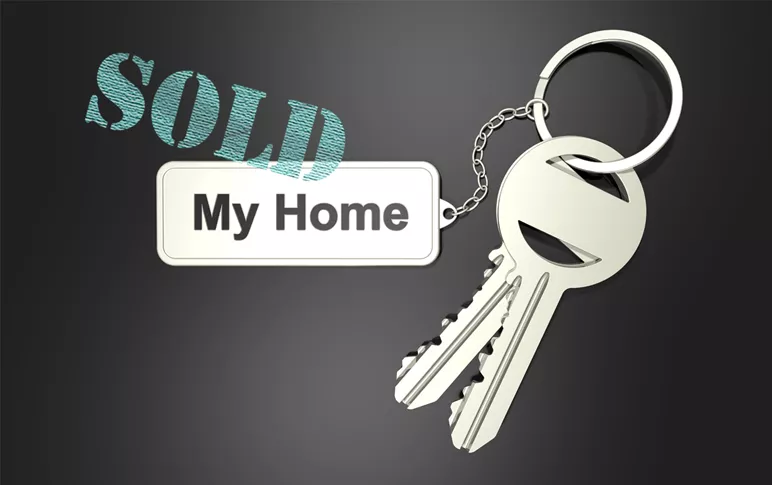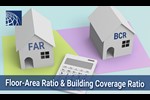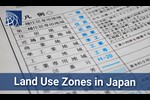Capital Gains Tax when Selling Property in Japan

Here we would like to provide some guidance regarding what taxes are involved when selling your real estate property in Japan.
When you have income from selling a real estate property–which is called “capital gains”–a national and local (inhabitant) income tax may be imposed on it. These taxation rates will differ according to how long you owned the property and for what purpose you used the property. Here is an introduction to the taxation system and the calculation method of a tax imposed on “capital gains”.
A tax imposed on capital gains
National and local (inhabitant) income tax may be imposed on capital gains earned from selling land and a building that you own, separately from other income such as income from employment. Taxes will be paid after filing a yearly tax return during the period of February 16th to March 15th of the following year after you have transferred a real estate property.
1. The Calculation of Taxable capital gains
The amount of capital gains that is taxable is calculated by using the amount that you receive from the buyer of the real estate property after deducting both the acquisition costs and transfer expenses.
The amount of Taxable Capital Gains = Income earned from the transfer of real property – (Acquisition costs + transfer expenses)
What are Acquisition Costs?
Acquisition Costs include brokerage fees, registration expenses, revenue stamp fees, and real estate acquisition tax in addition to the purchase cost for the real estate property. Depreciation and amortization of a building may be deducted from the acquisition costs according to the age of the building (calculated from the year construction on the building was completed).
What are Transfer expenses?
Transfer expenses include brokerage fees, registration expenses, revenue stamp fees, building demolition costs, and compensation for an eviction that is paid to a tenant.
2. Method for calculating the amount of tax to be paid
The amount of tax to be paid is calculated by taking the amount of taxable capital gains and multiplying it by the tax rate.
Tax amount = the Amount of Taxable Capital Gains × Tax rate
Tax rates can differ depending on whether the period of ownership is less than 5 years or more than 5 years.
| ■ Period of ownership is 5 years and less: “Short-term capital gains”→39.63% (National income tax 30.63%、Local inhabitant tax 9%) |
| ■ Period of ownership is more than 5 years: “Long-term capital gains”→20.315% (National income tax 15.315%、Local inhabitant tax 5%) |
You have to be careful as the calculation of the above ownership period differs from the “actual” ownership period of your real estate property. The ownership period is calculated by counting the time between the date you purchased your property and January 1st of the year you sell your property.
Example Case 1: If you purchased the property on December 1st 2014 (12-01-2014)
- You sell the property on December 2nd 2019 after the “actual” ownership period has passed 5 years.
- Calculated time period: 12-01-2014 -> 01-01-2019 = 4 years 1 month
- Tax rate = Short-term capital gains
- You sell the property after January 1st, 2020 when the “actual” ownership period has been over 5 years since January 1st, 2015.
- Calculated time period: 12-01-2014 -> 01-01-2020 = 5 years 1 month
- Tax rate = Long-term capital gains
Example Case 2: If you purchased the property on January 10th in 2015 (01-10-2015)
- You sell the property on January 11th 2020 after the “actual” ownership period has passed 5 years (by 1 day).
- Calculated time period: 01-10-2015 -> 01-01-2020 = 4years 11months 22days approx.
- Tax rate = Short-term capital gains
- You sell the property after January 1st, 2021 when the “actual” ownership period has exceeded 5 years as of January 1st, 2016.
- Calculated time period: 01-10-2015 -> 01-01-2021 = 5 years 11 months 22days approx.
- Tax rate = Long-term capital gains
When a Non-Resident sells Japanese real estate
The above local (inhabitant) tax shall not be imposed if the property owner does not have a registered address in Japan as of January 1st of the year after the property transfer has taken place. When the taxable capital gains is a negative amount, you will not have to file a yearly tax return. However, if the withholding tax amount has been subtracted from the transfer value (trading value) upon your sale of real estate, the amount shall be returned by filling a yearly tax return.
For the details of the case where withholding tax is imposed, please see “Withholding tax on real estate sales by Non-residents”
www.realestate-tokyo.com/news/tax-on-sale-of-property-non-residents
The tax rates for the sale of real estate used for your own residence and real estate used for lease (earning real estate property) is the same. But in the case of selling real estate used for your own residence the following exception is available.
Exception in the case of selling real estate used for your own residence

When you sell your house and land in which you currently live, or when you sell your house and land in which you don’t currently live by the date of December 31st in a tax year after 3 years from the time when you have last lived, the following exceptions can applied by satisfying certain requirements.
1. When you have capital gains from selling a home use as your own residence
1.1 Special deduction of JPY30,000,000
A maximum deduction of JPY30,000,000 can be applied when calculating your taxable capital gains in either case of long-term or short-term capital gains.
The amount of taxable Capital Gains = Income earned from the transfer of real estate property – (Acquisition costs + transfer expenses) – JPY30,000,000
When the amount of Capital Gains is less than JPY30,000,000, the tax amount is to be zero.
1.2 Reduced tax rate
A house used as your residence–which you have owned for more than 10 years–can have the following reduced tax rate applied for taxable long-term capital gains (after the Special deduction of JPY30,000,000) when calculating the tax amount.
Taxable long-term capital gains
| No more than JPY60,000,000 | 14.21% | National income tax 10.21%, Local inhabitant tax 4% |
|---|---|---|
| Over JPY60,000,000 | 20.315% | National income tax 15.315%, Local inhabitant tax 5% |
1.3 Purchasing a house as a replacement residence
When you sell a house being used as your residence and purchase another house as a replacement residence within a period of 3 years (from the previous year to the following year of the year of sale), by satisfying certain requirements–such as the transfer amount being JPY100,000,000 or less–if the house has been in your ownership for over ten years as of January 1st of the year of sale, and the house has been your primary residence for 10 years or more, the tax payment for the capital gains can be deferred.
Note, however, that the above 1.1 Special deduction of JPY30,000,000 and 1.2 Reduced tax rate can be applied to your selection of either one of them.
2. When you have transfer loss from selling a home used as your own residence
When selling your house–which you have owned for more than 5 years as of January 1st of the year of sale–and you have transfer loss from the sale (in the following cases of 2.1 or 2.2), you can add the transfer loss amount to other taxable income of the same year.
When you are unable to add the transfer loss amount to other taxable income from the same year as the year of sale, you can carry over the loss as a deduction in any of the following tax years (except for a tax year where your total income is over JPY30,000,000) that are within 3 years of the following year of the year of sale.
2.1 In the case of purchasing a new house as a replacement residence
When you sell your house that you have been using as your residence and purchase a new house as a replacement within a 3 year period (the year prior to the sale, the year of sale, and the year following the sale) and have an outstanding housing loan for the acquisition of the new house at the end of the year of sale, by satisfying certain requirements, you can add the transfer loss amount–from the house you sold–to other income, or you can carry over the deduction of the loss to the following tax year.
2.2 In the case of not purchasing a new house as a replacement residence
When you sell your house that you have been using as your residence with an outstanding housing loan as of the previous day of transfer (sales) contract conclusion, by satisfying certain requirements, you can add the transfer loss amount–from the house you sold (the maximum limit is the amount after deduction of the transfer (sales) amount of the house sold from the amount of the outstanding housing loan)–and other income, or you can carry over the deduction of the loss to the following tax year.
For further details please visit and read The National Tax Agency’s website below.
www.nta.go.jp/publication/pamph/koho/kurashi/html/05_2.htm

- Rental Apartments & Houses in Tokyo
- Listings of popular and luxurious rental apartments, condominiums, and houses designed with expats in mind.

- Apartments & Houses for Sale in Tokyo
- Listings of apartments, condominiums, and houses available for purchase in Tokyo.





















